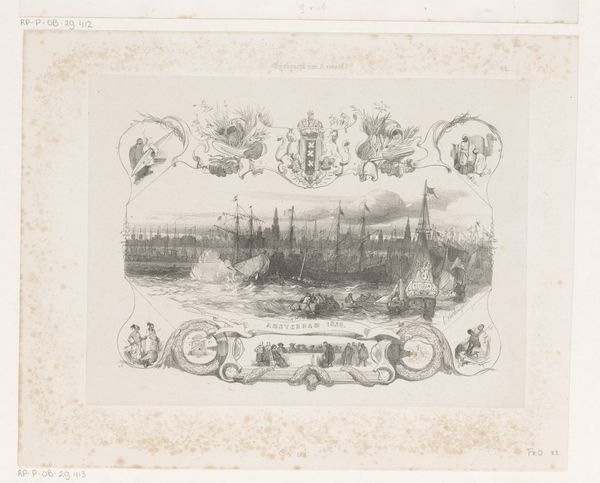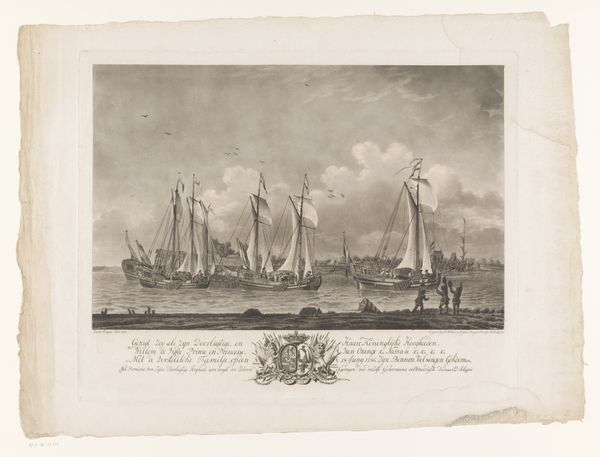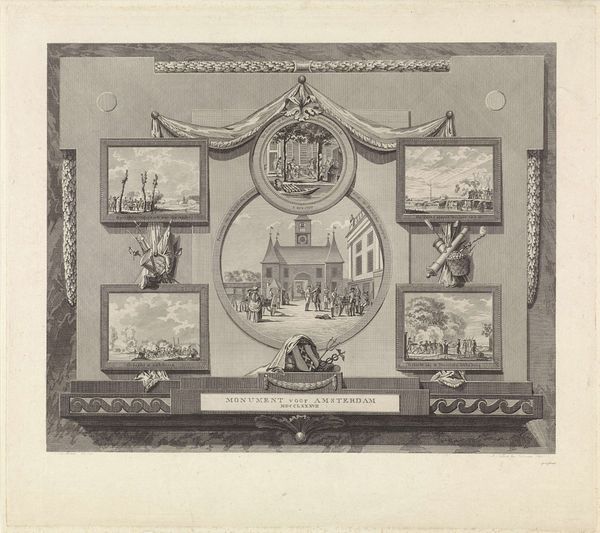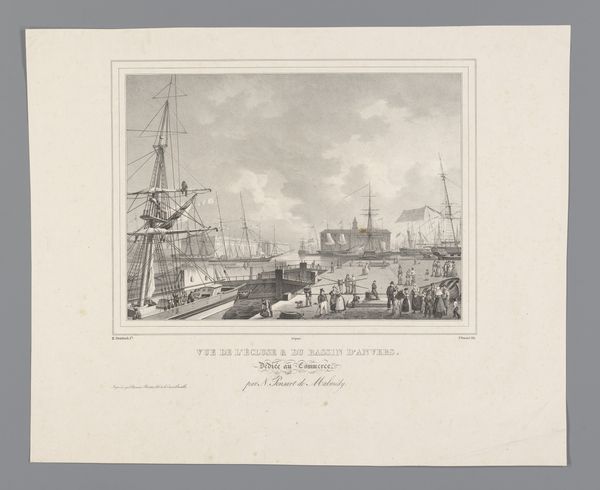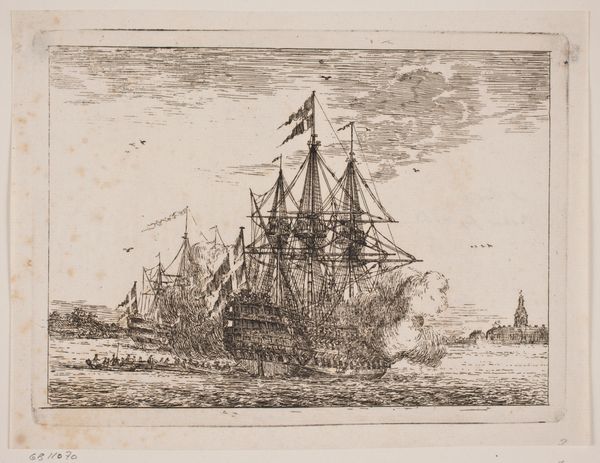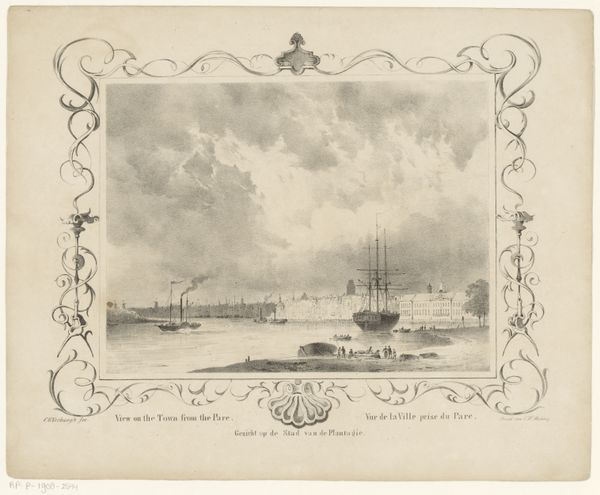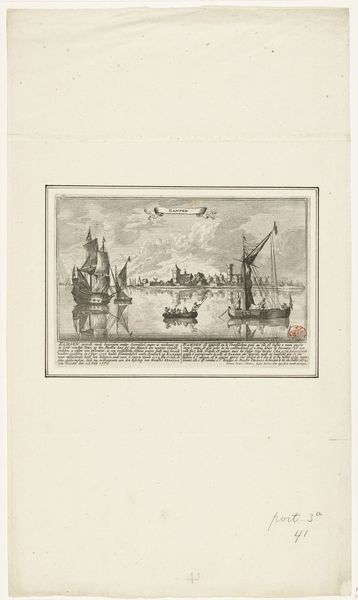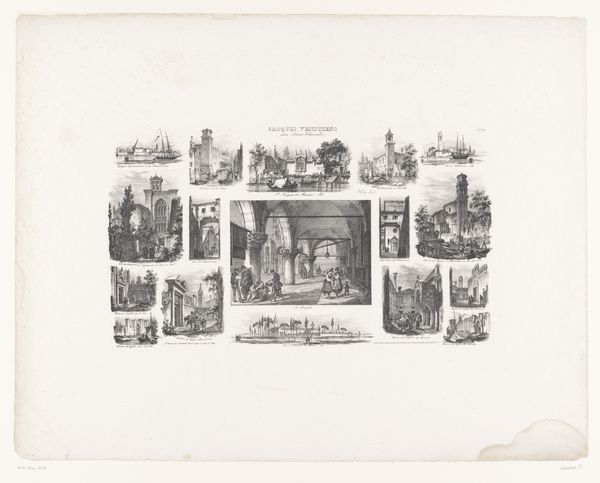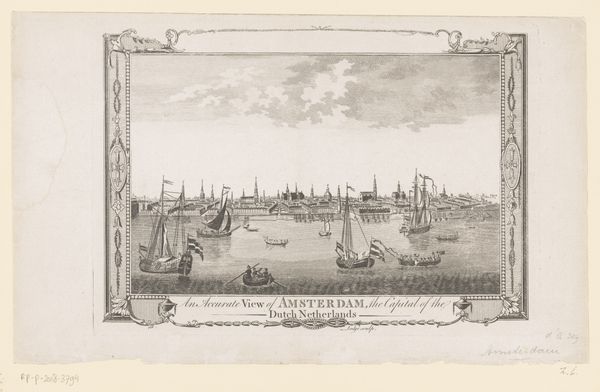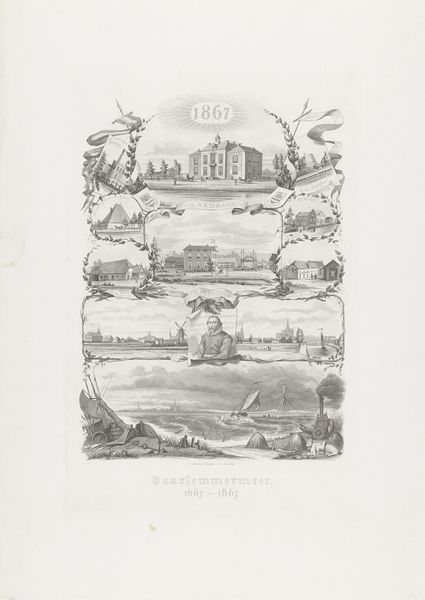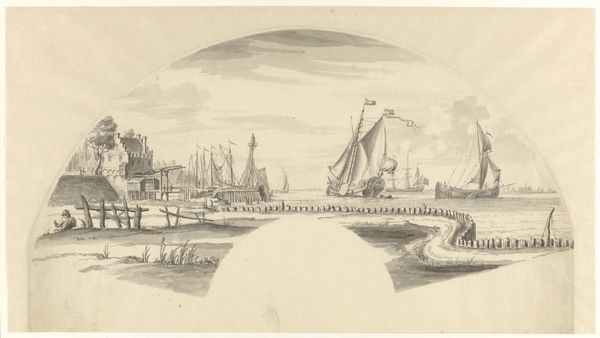
Herdenkingsprent ter gelegenheid van het honderjarig bestaan van de Zaanse zeil- en roeivereniging 1852
0:00
0:00
everharduskoster
Rijksmuseum
drawing, print, ink, pen, engraving
#
drawing
#
pen drawing
#
dutch-golden-age
# print
#
landscape
#
ink
#
pen work
#
pen
#
cityscape
#
genre-painting
#
engraving
Dimensions: height 415 mm, width 545 mm
Copyright: Rijks Museum: Open Domain
Everhardus Koster created this commemorative print for the centennial of the Zaanlandse Zeil- en Roeivereeniging, a sailing and rowing club, using lithography. This printmaking technique involves drawing on a flat stone with a greasy crayon, then treating it with chemicals so that ink adheres only to the drawn areas. It’s a process that allows for detailed and nuanced imagery, as we see here in the depiction of boats, buildings, and crowds celebrating on the water. Lithography gained popularity in the 19th century because it enabled the relatively quick and cheap reproduction of images, making art more accessible. The texture of the print is smooth, with fine lines creating depth and shadow, which is achieved by the artist's skilled hand and the nature of the lithographic process. The image presents a bustling scene, full of labor and leisure, a snapshot of Dutch society intertwining work and recreation. Looking closely at the materials, the making, and the context, we gain a deeper understanding of this artwork's significance, challenging traditional notions of what constitutes fine art.
Comments
No comments
Be the first to comment and join the conversation on the ultimate creative platform.
